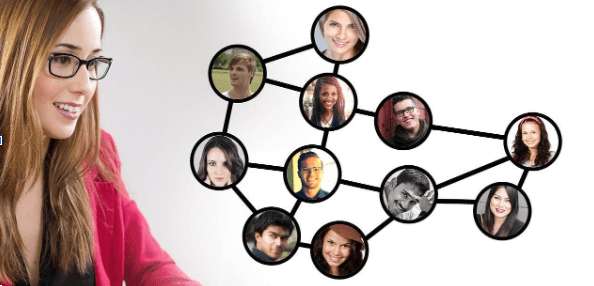Overcoming Employment Gaps: Strategies for Resume Success

In the dynamic landscape of today’s job market, it’s not uncommon for individuals to experience employment gaps in their professional journey. Whether due to personal reasons, career transitions, or economic downturns, these gaps can pose challenges when crafting a compelling resume. However, with strategic planning and a positive approach, it is entirely possible to turn employment gaps into valuable assets on your resume. This article explores effective strategies for overcoming employment gaps and achieving resume success.
Employment Gaps
Employment gaps refer to periods when an individual is not actively employed. These gaps can occur for various reasons, and they are a common aspect of many people’s professional journeys. Understanding the different types of employment gaps can help individuals address them effectively on their resumes and during job interviews.
Here are some common types of employment gaps:
Unemployment Due to Job Loss: This is one of the most common reasons for employment gaps. Individuals may experience periods of unemployment due to layoffs, company downsizing, or the termination of a contract. Such gaps are often involuntary and can be challenging to navigate, but they are a natural part of the job market’s ebb and flow.
Personal or Family Reasons: Individuals may take time off from their careers due to personal or family-related reasons. This could include maternity or paternity leave, taking care of a sick family member, or addressing personal health issues. These gaps are often considered valid and can be explained on a resume with honesty and transparency.
Educational Pursuits: Some individuals choose to take a break from their careers to pursue further education. This could involve obtaining a degree, attending workshops, or acquiring certifications to enhance their skills and qualifications. Educational employment gaps can be seen as an investment in professional development.
Career Transitions: Transitioning from one career to another may result in employment gaps. Individuals might take time off to explore new industries, gain relevant skills, or complete training programs for their desired career path. These gaps can be highlighted positively on a resume by emphasizing the acquired skills and experiences during the transition.
Entrepreneurial Ventures: Starting and running a business, whether successful or not, can lead to employment gaps. Entrepreneurs often invest significant time and effort into their ventures, and this experience can be valuable on a resume. Highlighting the skills developed during entrepreneurial endeavors can demonstrate initiative and business acumen.
Volunteer and Philanthropic Activities: Individuals may choose to dedicate time to volunteer work or philanthropic activities, leading to employment gaps. While not traditional employment, these experiences contribute to personal and professional growth. On a resume, individuals can showcase the skills acquired and the positive impact made during these activities.
Recovery or Rehabilitation: Health-related issues or recovery from an illness or injury can result in employment gaps. It’s essential to prioritize one’s well-being, and employers often understand and respect individuals who take the time needed for recovery. When discussing these gaps, focus on the steps taken to maintain or regain good health and any relevant skills acquired during the process.
Strategies for Resume Success
Be Transparent and Positive: When addressing employment gaps in your resume, honesty is key. Mention the reasons for the gap without going into unnecessary details. Use a positive tone to emphasize what you gained during this time, such as acquiring new skills, pursuing further education, or volunteering. This transparency builds trust with potential employers and demonstrates your proactive approach to personal and professional development.
Skill Development and Continuing Education: Use the time during employment gaps to enhance your skill set. Attend workshops, and online courses, or pursue certifications relevant to your field. Mention these educational experiences prominently on your resume, showcasing your commitment to staying current in your industry. This not only bridges the gap but also highlights your dedication to self-improvement and professional growth.
Freelance and Contract Work: If possible, take on freelance or contract projects during periods of unemployment. This not only adds valuable experience to your resume but also demonstrates your ability to adapt and contribute to different projects. Highlight these freelance engagements as separate entries in your work experience, focusing on the skills and accomplishments gained during these opportunities.
Networking and Professional Associations: Stay connected with your industry by attending networking events, and conferences, and joining professional associations. Engaging with peers and industry leaders not only keeps you informed about industry trends but also provides opportunities for potential job leads. Include any networking or association memberships on your resume to showcase your commitment to staying connected in your field.
Volunteer Work and Community Involvement: Showcase any volunteer work or community involvement during employment gaps. Volunteering not only contributes positively to society but also demonstrates your dedication to making a difference. Highlight the skills and experiences gained through these activities, and position them as valuable contributions to your overall professional development.
Functional Resume Format: Consider using a functional resume format, which focuses on skills and qualifications rather than chronological work history. This allows you to emphasize your capabilities, making it easier for employers to see your suitability for the position. Include a brief section addressing the employment gap, using it as an opportunity to reiterate the skills and experiences gained during that time.
Customize Your Resume for Each Job Application: Tailor your resume for each job application by emphasizing the skills and experiences most relevant to the position. Address any potential concerns about employment gaps in your cover letter, assuring employers of your commitment and readiness for the role. This personalized approach increases your chances of standing out among other applicants.
Conclusion:
Overcoming employment gaps requires a proactive and positive approach. By transparently addressing the gaps, focusing on skill development, engaging in relevant activities, and customizing your resume for each application, you can transform periods of unemployment into valuable assets on your resume. Embrace the opportunities for growth and self-improvement that come with employment gaps, showcasing your resilience and dedication to success in the professional arena.



